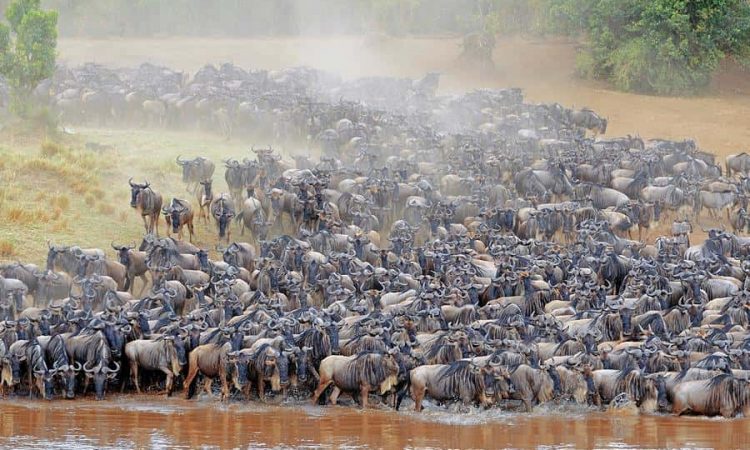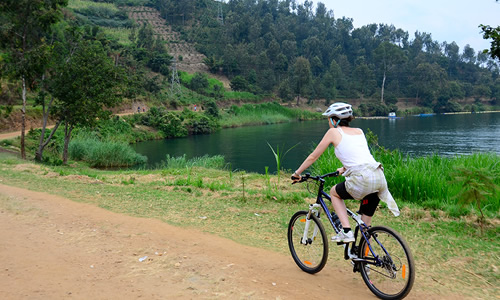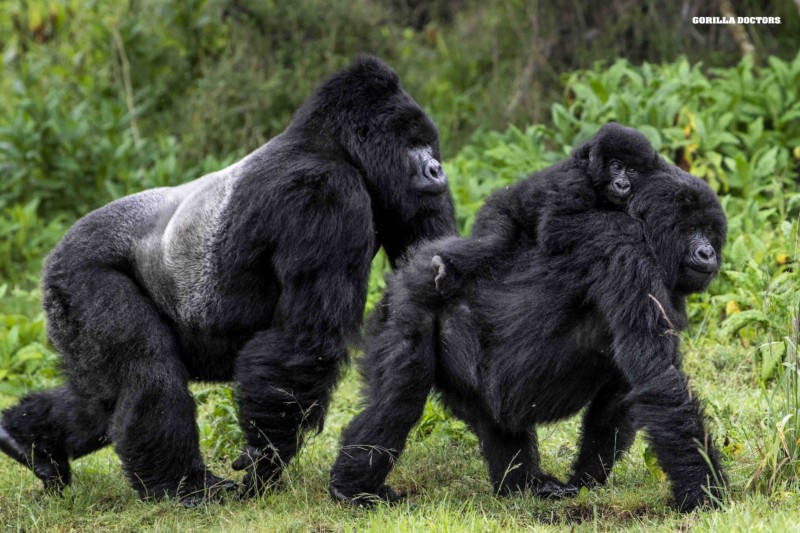Complete Guide to 2024 – 2025 Wildebeest Migration
Complete Guide to 2024 – 2025 Wildebeest Migration: Wildebeest migration also know as Gnu migration, Serengeti migration or Masai Mara migration is one of the last mass terrestrial wildlife movements left on the planet and one of the wonders in the world.
Wildebeest migration is one of the fascinating natural phenomena to witness on the African continent, the migration is an unrivalled wildlife spectacle said to be triggered by the seasonal rains. Around 1.5 million wildebeests, 200,000 wildebeest and hundered of thousands of antelopes migrate in the Mara – Serengeti ecosystem in search for fresh grazing grounds and water.

This article offers a complete guide to 2022 – 2023 wildebeest migration and details on several topics including
- What is the wildebeest migration
- When is the wildebeest migration
- Where is the wildebeest migration
- Impact of climate chane on wildebeest migration
What is the Wildebeest Migration?
Wildebeest migration is one of the wonders in the world and is one of the largest ungulates on earth with over 1.5 million wildebeests accompanied by over 400,000 antelopes and 200,000 zebras participating in the migration. The annual migration is a journey of approximately 3,000 kilometers around the Mara – Serengeti ecosystem.
Wildebeest River Crossing (Mara river crossing)
The Wildebeest River crossing also referred to as Mara River crossing is most sought for and exciting episode of the Great Migration, the river crossing is so deadly and filled with a mixture of emotions as wildebeests and other herds faceoff with the deadly Nile crocodiles in the waters of Mara River and predators such as lions, African wild dogs and cheetahs waiting on the banks of the river.
In the wildebeest river crossing, the herds cross over Mara river from Serengeti national park to the plains of Masai Mara national reserve, the crossing usually happen around late July to August with parts of the September as the herds return south.
Quick Facts about wildebeest migration
- More than 2 million animals and hundreds of zebras and Thomson gazelles take part in the Great Migration Serengeti
- In Junuary / February which is a calving season, more than 500,000 wildebeests are born and about 8,000 calves are born per day.
- Each of the animal taking part in the migration travels a thousand kilometers during the migration
- Wildebeests and zebras can travel together peacefully, this is because they both eat a different part of the same grass
- Wildebeests and zebras need each other during the migration, wildebeests are good at finding water and zebras know the way of the migration
- Each year, almost 250,000 wildebeests and 30,000 zebras die during the deadly migration.
When is the Wildebeest Migration?
The wildebeest migration happens in stages and each of the year, the herds experience a different stage. In February and partly March, the wildebeests find rest and give birth to their calves in the grassy plains of the highlands of Tanzania in Serengeti national park. In this calving season, more than half a million calves are born within a few weeks.
In April, the animals follw the rain and move to the far west of Serengeti national park and then they migrate step by step northwards through the center of the Serengeti heading towards the lush ground in the Masai Mara in southern Kenya.
At the end of the year, the migration goes back again to the highlands of Tanzania and this happens at the beginning of the rainy season.

Note: Every wildebeest migration is different, the route of the animals varies every year and this makes it impossible to predict to the migration, Serengeti is also a vast area, so the herds are hard to find sometimes. Witnessing the Great Migration is partly a matter of lucky, having a good safari guide also increase your lack.
Wildebeest Migration Monthly Calendar
| Month | Location | Description |
| December | Mara/ Loliondo, Tanzania | Rain starts. Migration and the herds leave the Mara, down to the Loliondo. Grass is fresh and Green. |
| January | Southern Plains, Tanzania | Moving to the short grass of the southern plains, Ngorongoro Crater. Game grows, Zebras start to foal. |
| February | Serengeti Plains, Tanzania | More than 2 million Zebras, Wildebeest, Gazelles and Elands are in the plains. Predators start to raise. Foal dropping time for the Wildebeest. |
| March | Serengeti Plains, Tanzania | Heavy rains are starting. |
| April | Northern Plains, Tanzania | Slowly start of the migration towards the western corridor as strong rains set in. |
| May | Mbalageti River, Tanzania | The migration moves along the Mbalageti river to the Grumeti. |
| June | Grumeti, Tanzania | Start of the dry season. Crocodiles in the Grumeti Area start to hunt Wildebeests. |
| July | North East Grumeti, Tanzania | Migration moves towards the Ikorongo or Lobo area, north east through the Grumeti. |
| August | Ikorongo Area, Tanzania | Majority of the migration crosses the Mara. |
| September | Maasai Mara, Kenya | The migration continues to the Mara, to Kenya, in search of food and water. |
| October | Maasai Mara, Kenya | End of the dry season in the Serengeti, fresh water in the Maasai Mara. |
| November | Serengeti Plains, Tanzania | Migration moves back south as a new cycle starts with the rains. |
Where is the Wildebeest Migration?
The Wildebeest migration’s journey is a clockwise movement between Serengeti national park in Tanzania and Masai Mara national reserve in Kenya, this journey is almost 3,000 kilometers.
The main areas / locations where to find the wildebeest migration are Serengeti, Tanzania and Maasai Mara national reserve in Kenya which are found in the Mara – Serengeti ecosystem. Though these areas are separate protected areas, these animals naturally know no borders and move to these places in search for food and water.
Herds recorded to be over 1.5 wildebeests and thousands of zebras and gazelles often migrate in groups of up to thousand animals traveling along the migrate route. It is also normal for some groups of the animals to deviate from the normal route.
Impact of Climate Change on the wildebeest migration
The wildebeest migration and its herds explains how animals live peacefully together and complement each other, wildebeests are good at finding water sources and zebras know the way to go, they both eat a different part of the same grass.
The wildebeest migration is greatly influenced by the changing rainy and dry season, the ever changing climate sometimes change the cycle by several weeks. The route also changes a little bit each year.
Best Time to Visit the Serengeti
If you wish to witness the most spectacular part of the Wildebeest migration, the best places to travel to are north of the Serengeti or to Masai Mara during the period from June to September.
Note: the days of travel in the North of the Serengeti are so long and because of this, it is recommended to stay in a few days in one of the mobile camps which increases your chances of seeing the crossing.
- January – presence of new wildebeest babies and predators action, predators are seen as they hunt the vulnerable babies
- February – the herds are in south
- March – this month is the end of the dry season, the herds migrate to the west
- April – this month is a rainy season, this period is difficult for safaris and some lodges are closed
- May – it is still a rainy season and difficult for safari, some lodges close
- June – this month is a best travel time ideal for Great Migration on the western corridor
- July – in this time, the herds are moving north towards Kenya
- August – herds reach the border of the Masai Mara
- September – the landscape is very dry making this time of the year is ideal for safaris
- October – the landscape is dusty dry and the animals are easiy seen at the few water points
- November – little rainy season, safaris are still possible with minor restrictions
- December – ideal time for a Tanzania safari in Serengeti national park
Note:
If you would like to experience the wildebeest’s annual baby boom which happens in Serengeti national park, January/February are the best time to travel to the south of Serengeti national park.
Best Time to Visit Masai Mara
Masai Mara national reserve’s climate is determined by its location in the Kenya highlands and by the occurrence of rainy and dry seasons, the best time to visit Masai Mara national reserve are as follows
- January – the climate conditions are great making it a perfect time of the year for a Masai Mara safari
- February – the climate is at its best
- March – the rainy season starts as early as mid – March
- April – rainy season, however safaris are still possible
- May – rainy season, however safaris are still possible
- June – marks the start of dry season
- July – this is the beginning of the Great Migration
- August – most ideal time to travel to Masai Mara to witness the Great Migration
- September – mostly ideal for the Great Migration
- October – end of the dry season
- November – little rainy season and safari is still possible
- December – little rainy season and safari are possible
Note:
- Dry season does not mean there is no rainfall at all, it is just much less frequent than it is in the rainy season
- The big rainy season in Kenya starts around the ends of March and lasts until the end of May, the second rainy season in Kenya is usually in the period from early November to Mid December although there may be shifts.
- Rainy season in Kenya means only short, sudden but very productive shower safaris. Even in this period, safaris are usually still possible.







